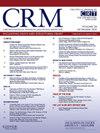AltaValve系统用于经导管二尖瓣置换术:早期安全性和有效性数据的叙述性回顾。
IF 1.9
Q3 CARDIAC & CARDIOVASCULAR SYSTEMS
引用次数: 0
摘要
二尖瓣返流(MR)是一种常见的进行性疾病,与不适合手术或经导管修复的高危患者预后不良相关。AltaValve系统(4C Medical Technologies, Maple Grove, MN)是一种新型经导管二尖瓣置换术(TMVR)装置,采用独特的环上心房固定机制,旨在最大限度地减少左心室流出道(LVOT)阻塞和瓣旁泄漏。本文总结了目前关于AltaValve的临床证据,包括病例报告、单中心和多中心经验,以及最近AltaValve早期可行性研究的结果。在不同的患者群体中,如功能性、原发性和心房性MR患者,该设备已经证明了很高的技术成功率、良好的安全性和显著降低MR严重程度。与经根尖通道相比,经隔膜输送是一种侵入性更小、更安全的方法,进一步扩大了设备的适用性。短期随访显示血流动力学、功能能力和生活质量指标持续改善,手术并发症发生率低。目前还没有瓣膜栓塞、明显血栓形成或结构变性的病例报道。虽然早期的结果是有希望的,但数据仅限于小的、非随机的队列,并且长期的持久性仍有待建立。AltaValve系统代表了TMVR的重要一步,特别是对于解剖结构复杂或无法手术的mr患者,正在进行的关键试验将至关重要,以确认其在经导管瓣膜治疗领域的作用。本文章由计算机程序翻译,如有差异,请以英文原文为准。
The AltaValve system for transcatheter mitral valve replacement: A narrative review of early safety and efficacy data
Mitral regurgitation (MR) is a prevalent and progressive condition associated with poor outcomes in high-risk patients who are often ineligible for surgery or transcatheter repair. The AltaValve system (4C Medical Technologies, Maple Grove, MN), a novel transcatheter mitral valve replacement (TMVR) device, employs a unique supra-annular, atrial-only fixation mechanism designed to minimize left ventricular outflow tract (LVOT) obstruction and paravalvular leak. This narrative review summarizes current clinical evidence on AltaValve, including case reports, single-center, and multicenter experiences, as well as findings from the recent AltaValve Early Feasibility Study. Across diverse patient populations, such as those with functional, primary, and atrial MR, the device has demonstrated high technical success, favorable safety, and significant reduction in MR severity. Transseptal delivery has emerged as a less invasive and safer approach compared to transapical access, further expanding the device's applicability. Short-term follow-up reveals consistent improvement in hemodynamics, functional capacity, and quality of life measures, with low procedural complication rates. No cases of valve embolization, significant thrombosis, or structural degeneration have been reported yet. While early outcomes are promising, the data are limited to small, non-randomized cohorts, and long-term durability remains to be established. The AltaValve system represents a significant step forward in TMVR, particularly for patients with anatomically complex or inoperable MR. Ongoing pivotal trials will be essential to confirm its role within the transcatheter valve therapy landscape.
求助全文
通过发布文献求助,成功后即可免费获取论文全文。
去求助
来源期刊

Cardiovascular Revascularization Medicine
CARDIAC & CARDIOVASCULAR SYSTEMS-
CiteScore
3.30
自引率
5.90%
发文量
687
审稿时长
36 days
期刊介绍:
Cardiovascular Revascularization Medicine (CRM) is an international and multidisciplinary journal that publishes original laboratory and clinical investigations related to revascularization therapies in cardiovascular medicine. Cardiovascular Revascularization Medicine publishes articles related to preclinical work and molecular interventions, including angiogenesis, cell therapy, pharmacological interventions, restenosis management, and prevention, including experiments conducted in human subjects, in laboratory animals, and in vitro. Specific areas of interest include percutaneous angioplasty in coronary and peripheral arteries, intervention in structural heart disease, cardiovascular surgery, etc.
 求助内容:
求助内容: 应助结果提醒方式:
应助结果提醒方式:


